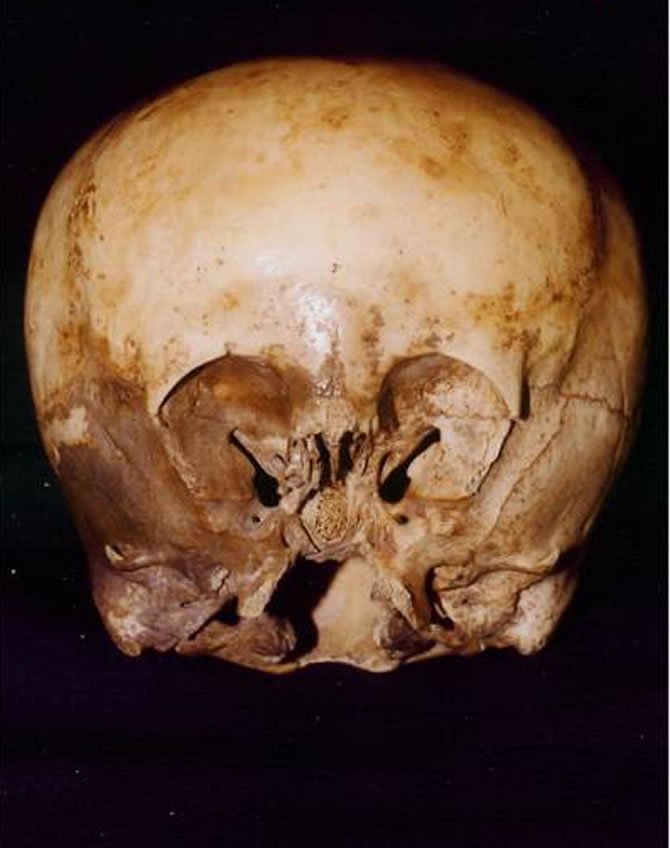The Starchild Skull: Alien child? English and Espanol

The Starchild Skull: A Fascinating and Mysterious Relic
The Starchild Skull is a human-like skull that has been the subject of much mystery and controversy. Believed to be around 900 years old, the skull is significantly smaller and lighter than a typical human skull, and it has a number of unusual features that have led some to speculate that it may not be of human origin.
The Starchild Skull was discovered in Mexico in the 1930s and was initially thought to be the remains of a deformed human child. However, further analysis revealed that the skull was much too thin and fragile to be human, and it had a number of other unusual characteristics, including a larger than normal brain size and a lack of frontal sinuses. These and other anomalies led some researchers to believe that the Starchild Skull may be the remains of an extraterrestrial being.
Over the years, various theories have been put forward to explain the unusual nature of the Starchild Skull. Some experts have suggested that it could be the result of some sort of genetic experimentation or mutation, while others have proposed that it may be the remains of a previously unknown human ancestor.
Despite the many theories that have been put forward, there is still no definitive answer as to what the Starchild Skull really is. Some scientists believe that it is simply the result of a rare genetic disorder, while others argue that it may be something much more mysterious and extraordinary.
The mystery surrounding the Starchild Skull has made it the subject of numerous articles, books, and documentaries. It has been examined by scientists and researchers from around the world, and it continues to captivate the imaginations of people everywhere. Whether it is the remains of an extraterrestrial being, a genetic anomaly, or something else entirely, the Starchild Skull remains a fascinating and mysterious relic that continues to intrigue and intrigue.
Espanol
El cráneo del niño estelar es un cráneo humanoide que ha sido objeto de mucho misterio y controversia. Se cree que tiene alrededor de 900 años y es significativamente más pequeño y ligero que un cráneo humano típico, y tiene una serie de características inusuales que han llevado a algunos a especular que puede no ser de origen humano.
El cráneo del niño estelar fue descubierto en México en la década de 1930 y al principio se pensó que eran los restos de un niño humano deformado. Sin embargo, ulteriores análisis revelaron que el cráneo era demasiado delgado y frágil para ser humano y tenía una serie de otras características inusuales, como un tamaño de cerebro más grande de lo normal y la ausencia de senos frontales. Estos y otros anomalías llevaron a algunos investigadores a creer que el cráneo del niño estelar puede ser el resto de un ser extraterrestre.
A lo largo de los años, se han propuesto varias teorías para explicar la naturaleza inusual del cráneo del niño estelar. Algunos expertos han sugerido que podría ser el resultado de algún tipo de experimentación genética o mutación, mientras que otros han propuesto que podría ser el resto de un antepasado humano desconocido.
A pesar de las muchas teorías que se han propuesto, todavía no hay una respuesta definitiva sobre lo que realmente es el cráneo del niño estelar. Algunos científicos creen que es simplemente el resultado de un raro trastorno genético, mientras que otros argumentan que puede ser algo mucho más misterioso y extraordinario.
El misterio que rodea el cráneo del niño estelar lo ha convertido en el tema de numerosos artículos, libros y documentales. Ha sido examinado por científicos e investigadores de todo el mundo y sigue capturando la imaginación de las personas en todas partes. Ya sea que sea el resto de un ser extraterrestre, una anomalía genética o algo totalmente diferente, el cráneo del niño estelar sigue siendo un relicario fascinante y misterioso que sigue intrigando y fascinando.

Very interesting! Thanks for sharing this story with us. 😊
It seems like this may be a case of congenital hydrocephalus. Substantial fluid accumulation within the skull, if symmetrical, could cause the bones within the skull to shift, possibly in the manner seen in this particular case. The lack of frontal sinuses is probably the strangest aspect, but if there was stunted development and separation of the bones prior to birth (due to the hydrocephalus), that may explain it as well.
Holy crap are you medical doctor?
Yes, I do happen to be one. 😊